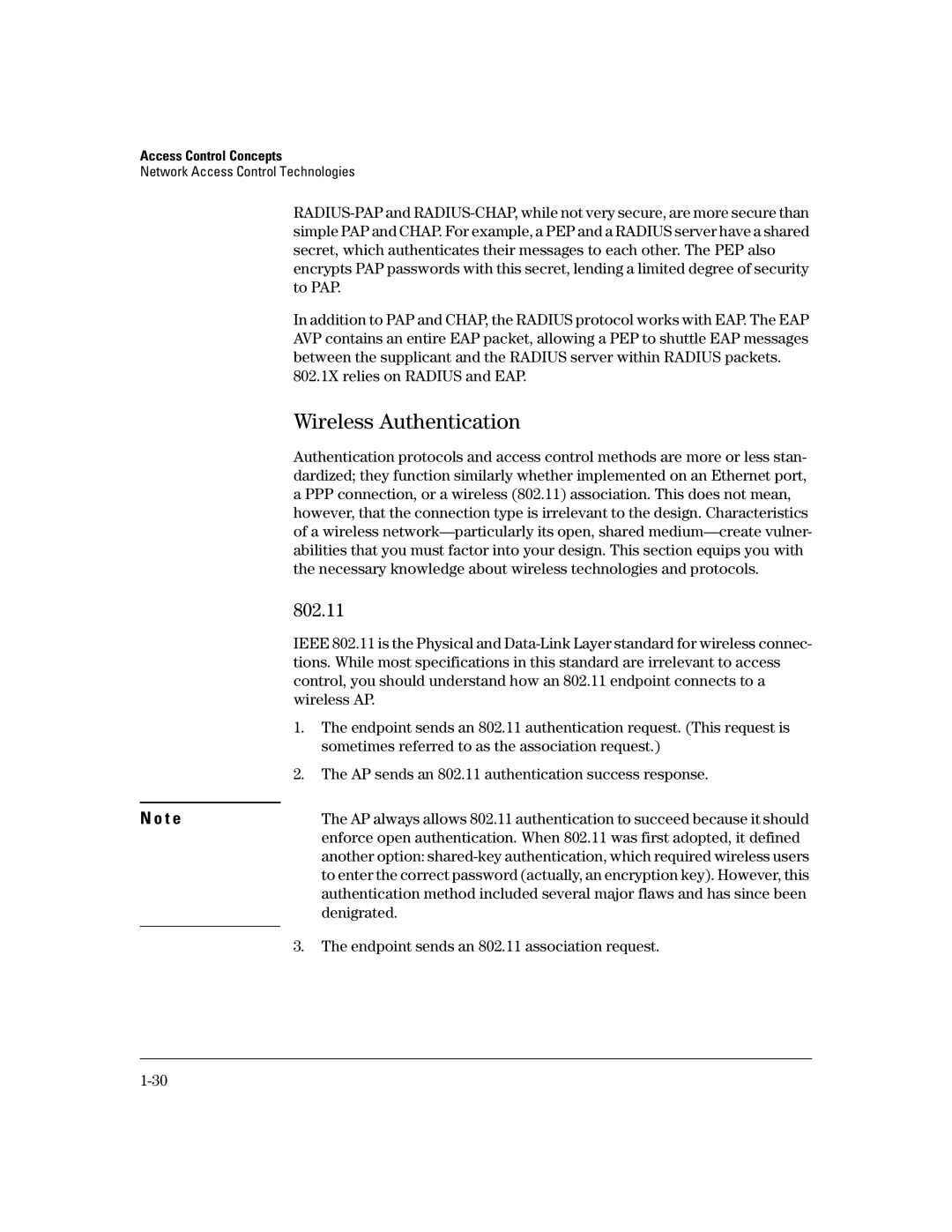
Access Control Concepts
Network Access Control Technologies
In addition to PAP and CHAP, the RADIUS protocol works with EAP. The EAP AVP contains an entire EAP packet, allowing a PEP to shuttle EAP messages between the supplicant and the RADIUS server within RADIUS packets.
802.1X relies on RADIUS and EAP.
Wireless Authentication
Authentication protocols and access control methods are more or less stan- dardized; they function similarly whether implemented on an Ethernet port, a PPP connection, or a wireless (802.11) association. This does not mean, however, that the connection type is irrelevant to the design. Characteristics of a wireless
802.11
IEEE 802.11 is the Physical and
1.The endpoint sends an 802.11 authentication request. (This request is sometimes referred to as the association request.)
2.The AP sends an 802.11 authentication success response.
N o t e | The AP always allows 802.11 authentication to succeed because it should | |
|
| enforce open authentication. When 802.11 was first adopted, it defined |
|
| another option: |
|
| to enter the correct password (actually, an encryption key). However, this |
|
| authentication method included several major flaws and has since been |
|
| denigrated. |
|
|
|
3. | The endpoint sends an 802.11 association request. | |
